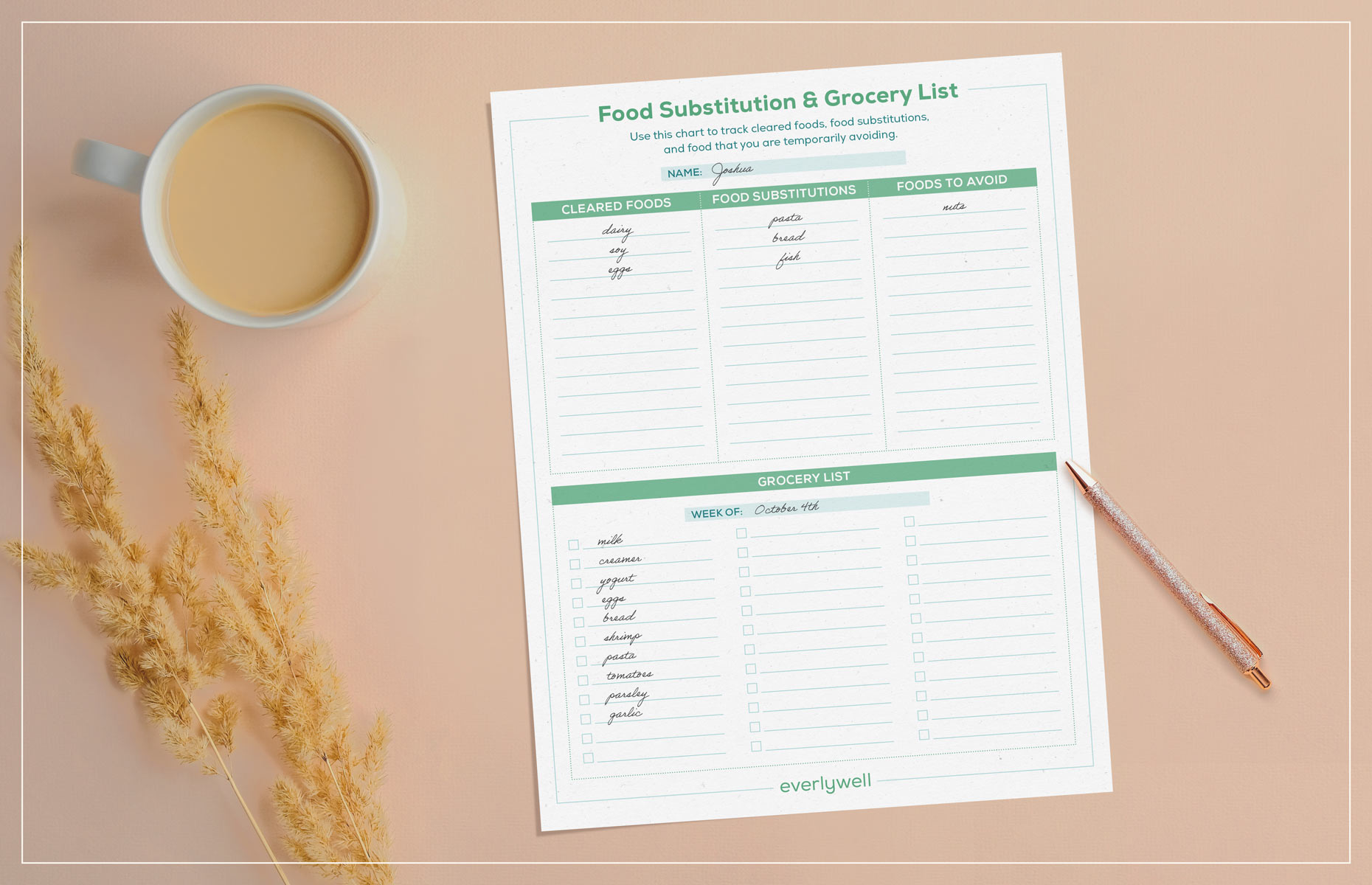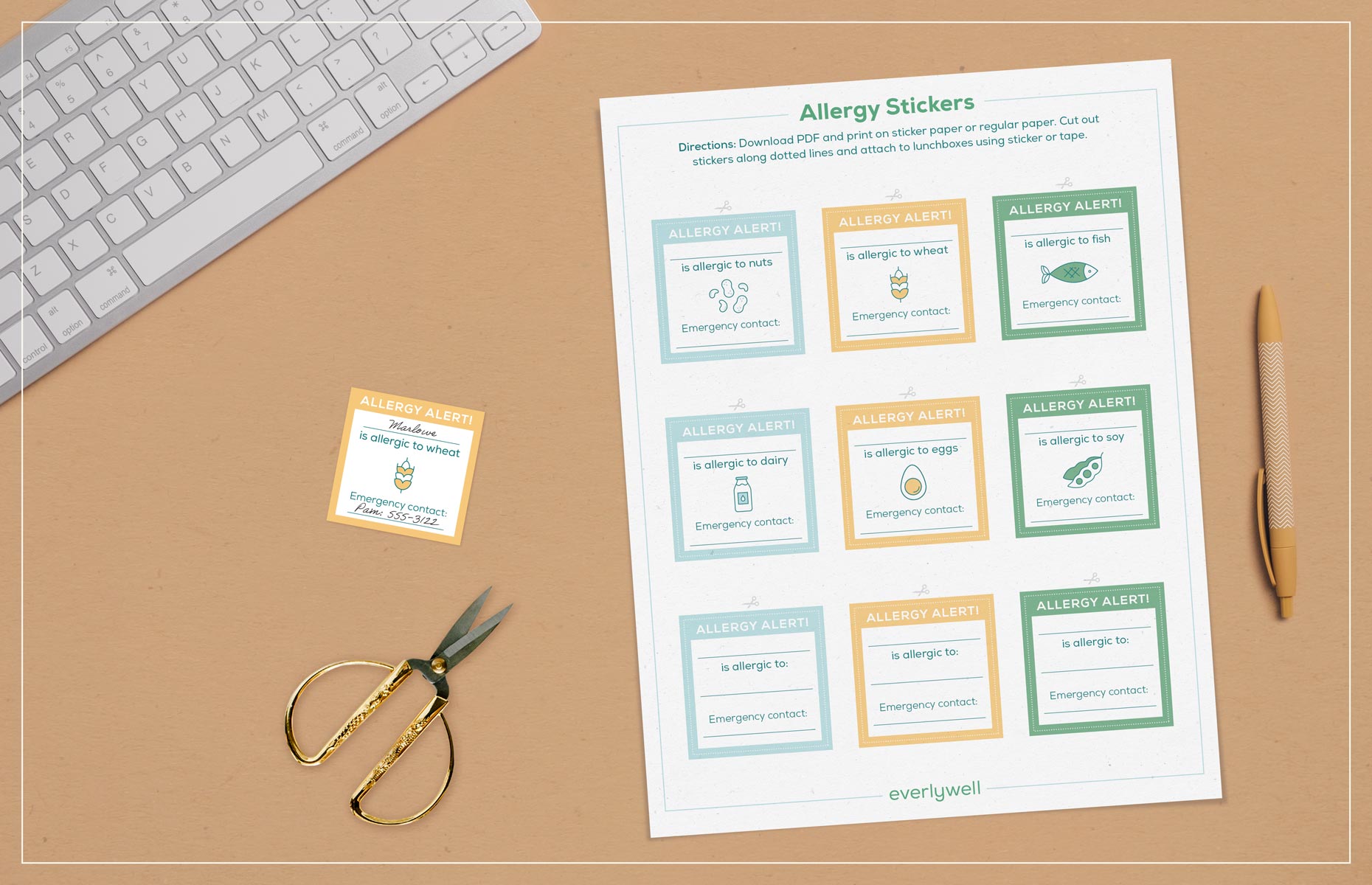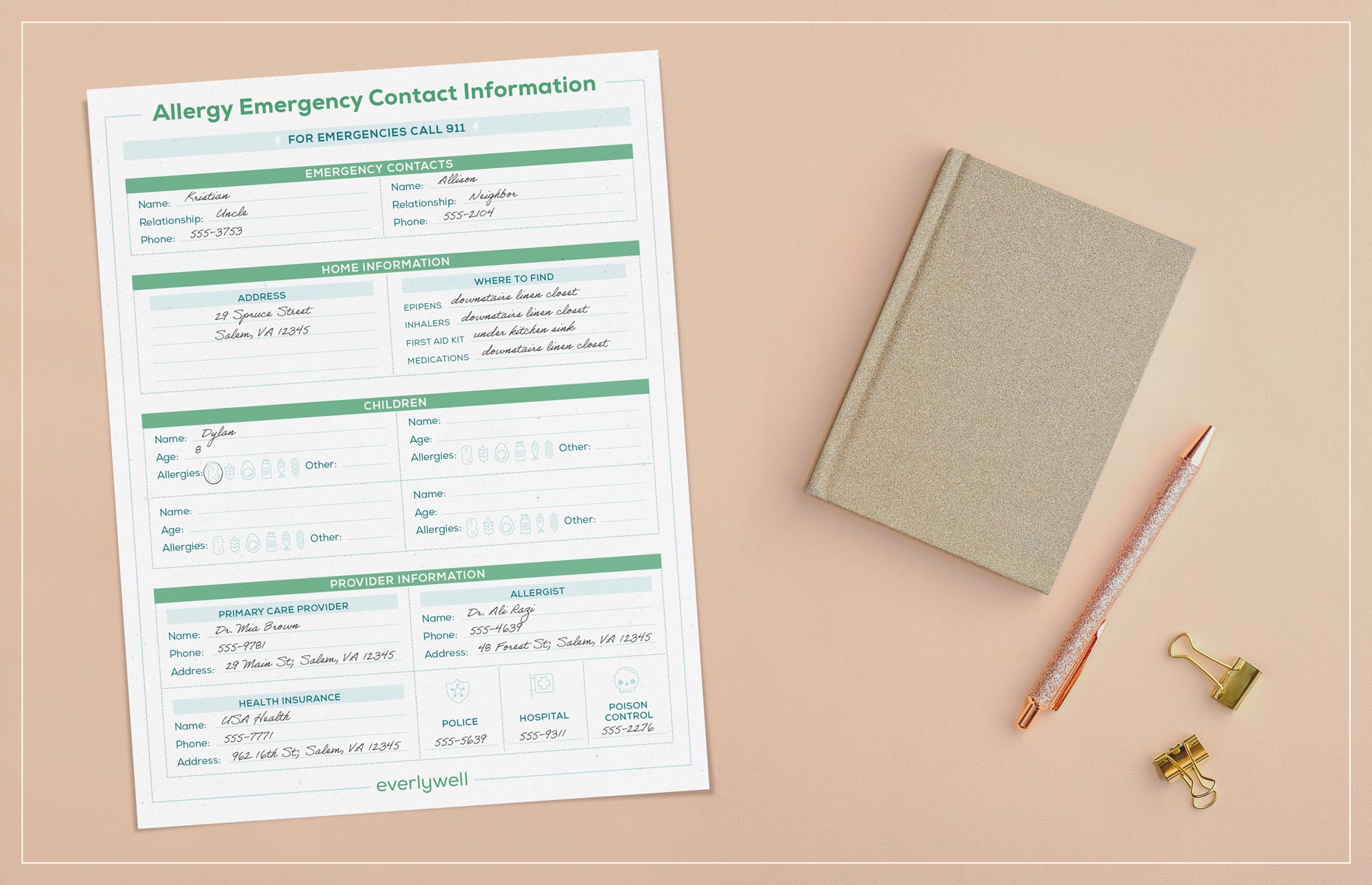
Food Sensitivities vs. Food Allergies: How To Determine the Difference
Food should be nourishing, delicious, and fun to prepare and eat — but food sensitivities and allergies can prevent you from enjoying food to the fullest. While food sensitivities can make you uncomfortable, food allergies can be potentially life-threatening, so it’s important to know the difference and consider getting tested for both, as many people don’t understand the differences between food allergies vs. food sensitivities.
Read on to learn more about the differences between food sensitivities vs. food allergies, and don’t forget to download the printables below to help you keep track of your food sensitivities or allergies.
| Food sensitivity | Food allergy | |
|---|---|---|
| Reaction time | Delayed response, classically 48-72 hours after ingestion | Occurs immediately or up to several hours after exposure |
| How it's discovered | Blood test for reactivity of IgG antibodies Results meant to guide a two-part elimination diet |
Skin prick test or blood test for IgE antibodies |
| Threat to well-being | Not life-threatening | Can be life-threatening in severe cases |
| Common symptoms |
|
|
What are food sensitivities?
A food sensitivity is a delayed, non-life-threatening immune reaction to a specific food or foods.
Unlike a food allergy, the symptoms of a food sensitivity can be delayed for a few days after ingesting the food. It’s possible for people with food sensitivities to not understand their sensitivities for years, due to delayed reaction times and symptoms that can be common in other conditions (like diarrhea or bloating) after ingesting the food or foods.
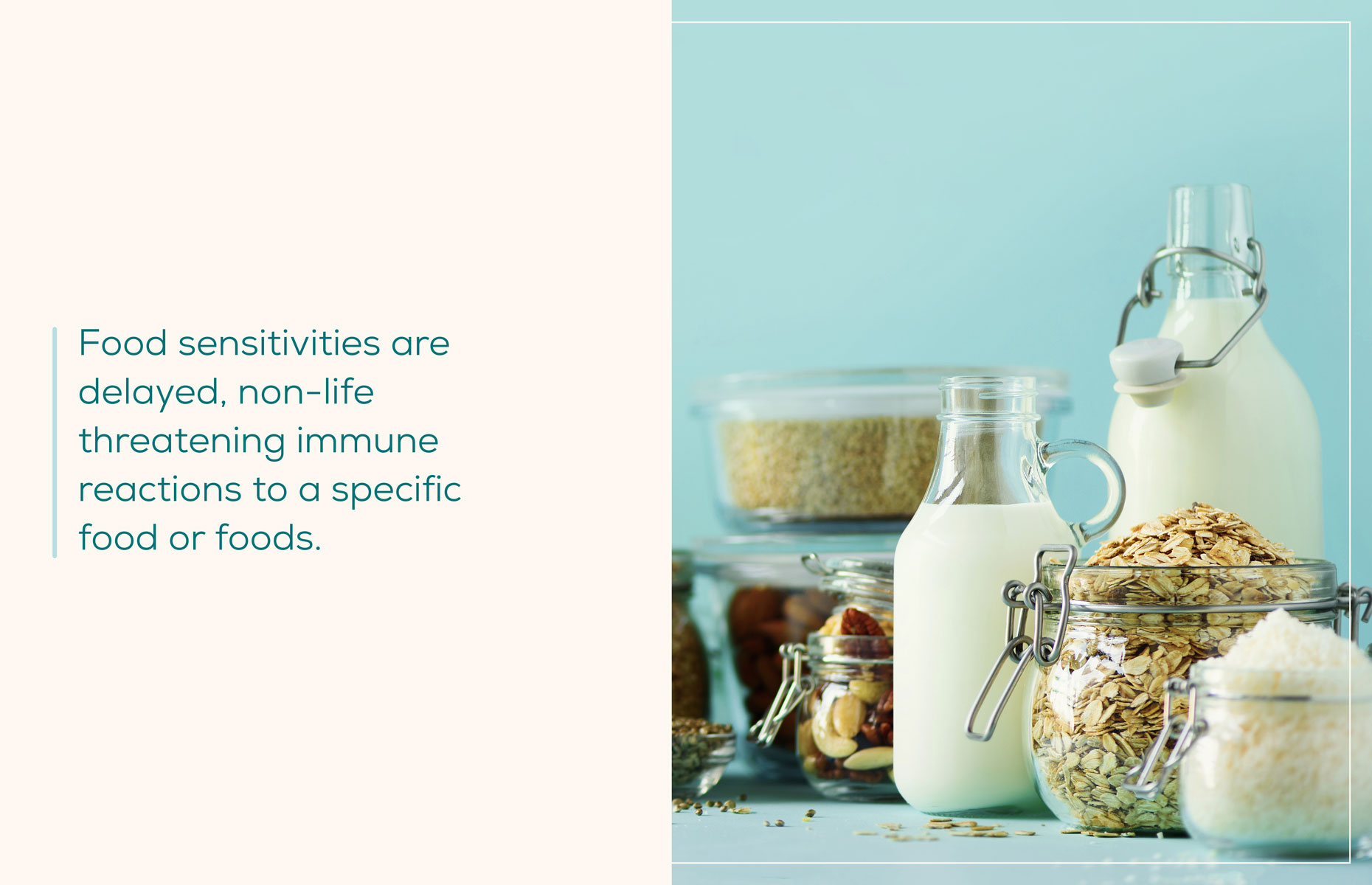
How to spot a food sensitivity
There are a number of common issues that can be related to your body’s IgG antibody response to certain foods. They include:
- Bloating
- Gastrointestinal distress
- Headaches or migraines
- Stomach pain
Regularly experiencing feelings like these after eating may mean you have a sensitivity to certain foods, though it’s also possible to experience no symptoms and still have a food sensitivity. You should be able to eat without fear of feeling uncomfortable so consider speaking with your doctor and taking an at-home food sensitivity lab test to test yourself for your IgG reactivity to many common foods.
Once you've tested yourself and received your results, you should consider a two-part temporary elimination diet, complete with a food journal, to see if your reactivities are connected to the symptoms that prompted you to take the test.
If you’re grocery shopping for yourself while on an elimination diet, you can use our food sensitivities grocery list to make going to the store a breeze. Remember to add in appropriate food substitutions to any foods you’re testing, so you’re getting the nutrients you need during your elimination diet.
Keep this printable on your fridge so you can track what you need to buy throughout the week, then bring it to the store for easy reference.
Common food sensitivities
Though food sensitivities and symptoms vary from person to person, there are some foods and food groups that are common food sensitivity culprits. If you’re experiencing discomfort with any of these foods or food groups, we recommend that you speak with your doctor.
Dairy products
Dairy sensitivities can be common, though the exact cause is not known. In addition, the symptoms that individuals experience can vary and may be delayed, making it harder to pinpoint the trigger.
Lactose intolerance is different from sensitivity to a dairy product, so we recommend speaking with your doctor if you believe you may be lactose intolerant.
Gluten
Some individuals may experience a sensitivity to gluten or wheat. Gluten is a protein found in numerous grains, like wheat and rye, and common carb products, like crackers and beer. Gluten intolerance occurs when you eat a product containing gluten and the resulting symptoms may be similar to those of food sensitivity, such as bloating, abdominal pain, diarrhea, or constipation.
What are food allergies?
A food allergy is a potentially life-threatening, immediate immune response to a certain food or foods that can result in a histamine reaction, such as hives or difficulty breathing. Food allergies are mediated by IgE antibodies in your immune system reacting to a certain food.
Food allergies range from mild to severe, and can begin at any age. They can even develop with a food that you have eaten and enjoyed for years with no symptoms [1]. Unlike sensitivities, food allergies can be life-threatening and cannot be treated with an elimination diet. Food allergies should be managed and monitored with the help of your physician.
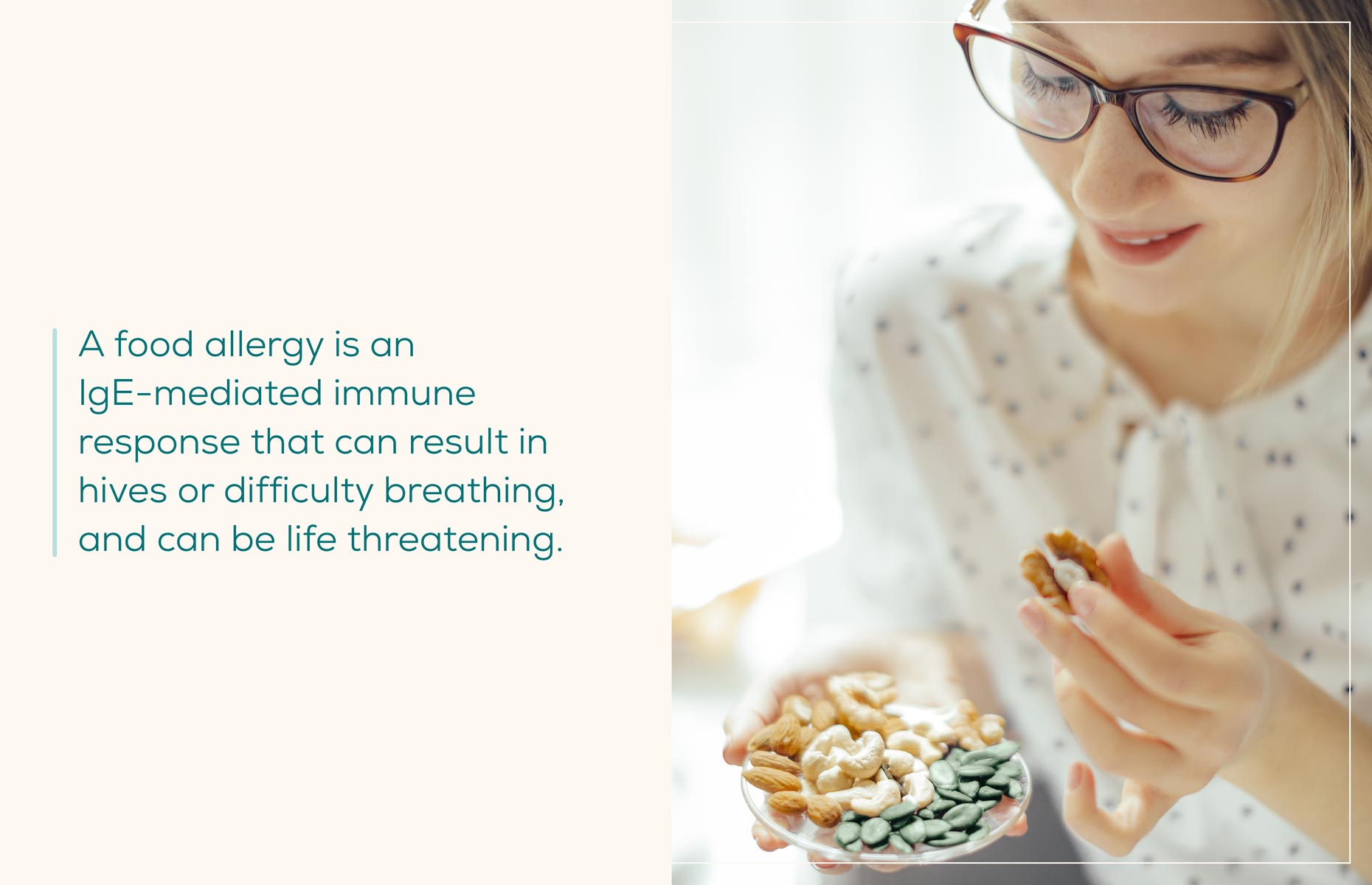
How to identify a food allergy
Food allergies should be evaluated by a healthcare provider and can be determined by a skin prick test or a blood test for IgE antibodies.
Food allergy symptoms are much more severe than food sensitivities. Symptoms often present immediately after ingesting the food, often within minutes, but can occur hours after ingestion [1].
Common symptoms of food allergies include:
- Abdominal cramping
- Anaphylaxis
- Coughing or wheezing
- Dizziness or lightheadedness
- Flushed skin, rash, or hives
- Swelling of the face, tongue, and/or lips
- Tingling or itchy sensation in mouth or throat
- Vomiting and/or diarrhea
An elimination diet is not recommended for determining your reactivity to food allergies, as they can be potentially life-threatening. It is possible for some children to outgrow allergies as they get older [2].
Being a parent of a child with allergies that have been established by a physician can be tough. If you want to ensure your child is safe at school or at a friend's house, consider using these allergen stickers for your child’s foods.
They clearly identify allergens doctors have advised your child to look out for, along with clear guidelines for teachers, babysitters, or other parents on what they can and can’t eat. Currently, Everlywell does not offer food allergy or food sensitivity testing to minors under the age of 18.
Common food allergies
According to the Centers for Disease Control and Prevention, there are eight foods that account for around 90 percent of all food allergies: eggs, milk, peanuts and tree nuts, fish and shellfish, wheat, and soybeans [3]. Allergies to these foods can range from mild (such as an itching after eating) to severe (such as anaphylaxis). Consult your doctor as to what your treatment and management plan should be.
The best way to manage your allergy at home is to avoid foods with the allergen, which involves carefully reading food labels.
1. Eggs
Egg allergies are caused by proteins in egg whites or yolks that trigger responses by IgE antibodies in your immune system.
Those with allergies to chicken eggs may also be allergic to other types of eggs, such as quail, goose, or duck, that would need to be determined by your healthcare physician. Egg allergy symptoms can occur after both eating or touching eggs, and include skin reactions, difficulty breathing, stomach pain, or even anaphylaxis.
To avoid triggering allergic reactions to eggs, it’s best to avoid eggs altogether (as egg yolks and whites can be difficult to separate completely). It’s best to consult your doctor for what foods are cleared and what foods should be avoided.
2. Milk
Milk and dairy allergies are also common in children, though as mentioned above, many adults develop sensitivities or allergies to certain dairy products later in life. Milk allergies can cause symptoms like hives, an upset stomach, vomiting, bloody stool (particularly in infants), and anaphylaxis.
If you have an allergy to cow’s milk, you may also have an allergy to milk from other animals, such as goats and sheep. You should reach out to your healthcare provider to investigate further.
3. Nuts
The most severe symptom associated with peanut and nut allergies is anaphylaxis, though those with nut allergies may experience a wide range and severity of symptoms.
Peanuts and tree nuts are two different types of allergies, and a person can be allergic to peanuts without being allergic to tree nuts (and vice versa), or can be allergic to all legume and nut varieties (such as peanuts, walnuts, etc.). Consult with your doctor to clear up any confusion around your nut allergy.
4. Fish and shellfish
Some people do not develop allergies to finned fish (such as salmon, halibut, or cod) until later into adulthood, but many children also have fish allergies. Having a finned fish allergy does not mean you have a shellfish allergy (or vice versa). Consult your doctor if you have any questions regarding your fish or shellfish allergy.
Shellfish allergies are caused in the greatest numbers by crustaceans, including shrimp, lobster, and crab, and most frequently develop in adulthood, but can affect children as well.
Some people with shellfish allergies can eat mollusks, such as oysters and mussels, without having a reaction. Cross contamination is common with shellfish, however, so be careful when eating any type of seafood, and consult with your healthcare provider before attempting to eat any other seafood.
5. Wheat
Wheat allergies can be triggered by any food that contains wheat, including bread and pasta.
Wheat allergies are different from celiac disease, which is an autoimmune disease where eating gluten leads to damage of the small intestine. Consult your doctor or allergist if you believe you may have celiac disease.
6. Soy
Soy is another common allergy in children that can be outgrown by the time they reach young adulthood. Soy allergies are typically spotted in young children and infants under the age of three, as soy is a common ingredient in infant formulas and other processed foods.
Soy allergies can be triggered by soy and soy products, such as soy milk or soy sauce.
What to do in case of an allergy emergency
Allergy emergencies can be scary, especially if you or your loved one is experiencing anaphylaxis. In cases of ingestion of a food allergen, you should reach out for immediate medical attention from a hospital or your healthcare physician.
If you’ve been experiencing symptoms consistent with food allergies (such as hives or swelling of the face, lips, or tongue), you may want to plan a consultation with your healthcare provider to discuss a food allergy test and treatment. Keep track of what you eat and how you feel afterward to help guide this discussion and identify potential triggers in your diet.
Whether you, your partner, or your child has an allergy, you should have an emergency plan in place in case someone has an allergic reaction and needs medical attention. Plan ahead with our allergy emergency printable to hand out to your child’s babysitter, coach, teacher, or other adult to provide assistance at a moment’s notice.
Food allergies and food sensitivities can make going out to eat, ordering takeout, or enjoying food at a friend’s party more difficult, but it doesn’t have to affect your day-to-day life. Through careful monitoring and discussions with your doctor, you can take back control of your diet and find foods that bring you joy. Remember that you don’t have to go through this journey alone — Everlywell is here for you and your health needs.
- Food allergy_. American Academy of Allergy Asthma & Immunology. (n.d.). Retrieved February 8, 2022.↩
- Author: Kara Wada. (2017, December 1). How to know a food allergy has been outgrown. The Ohio State University Wexner Medical Center. Retrieved February 8, 2022.↩
- Centers for Disease Control and Prevention. (2020, June 8). Food allergies. Centers for Disease Control and Prevention. Retrieved February 8, 2022.↩
